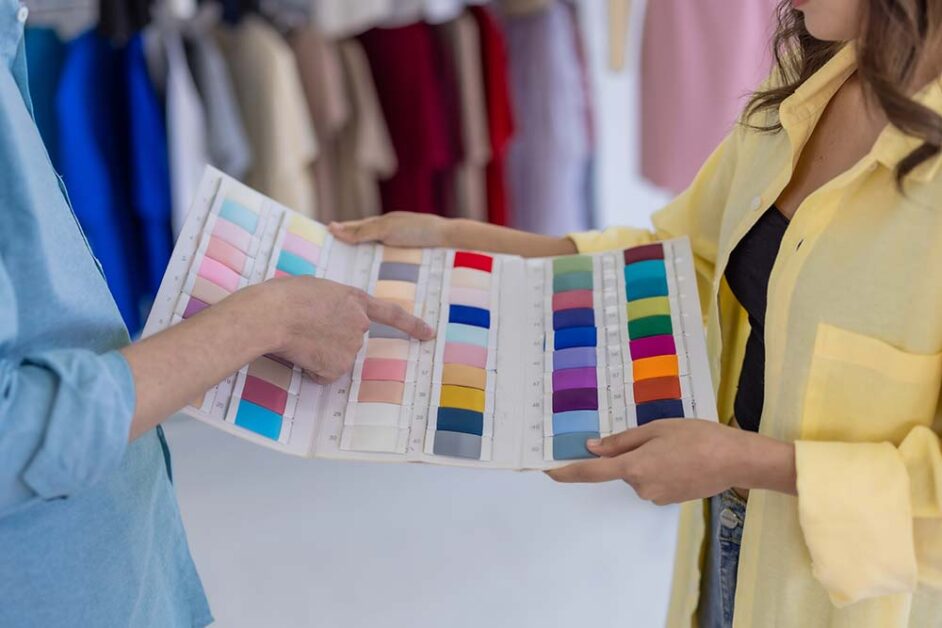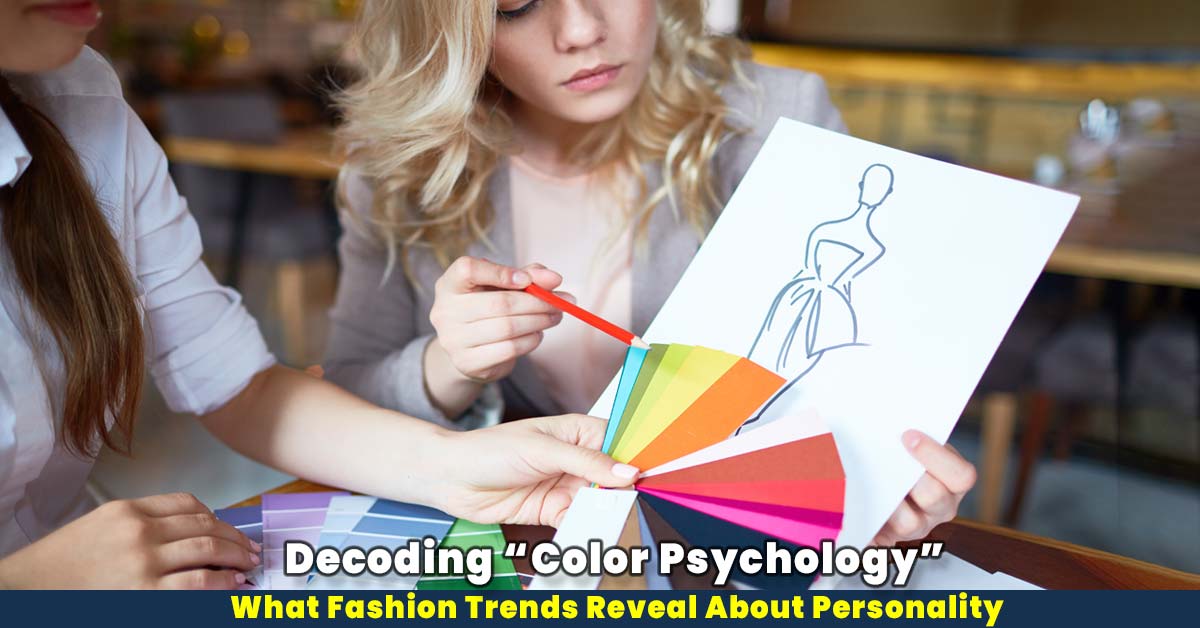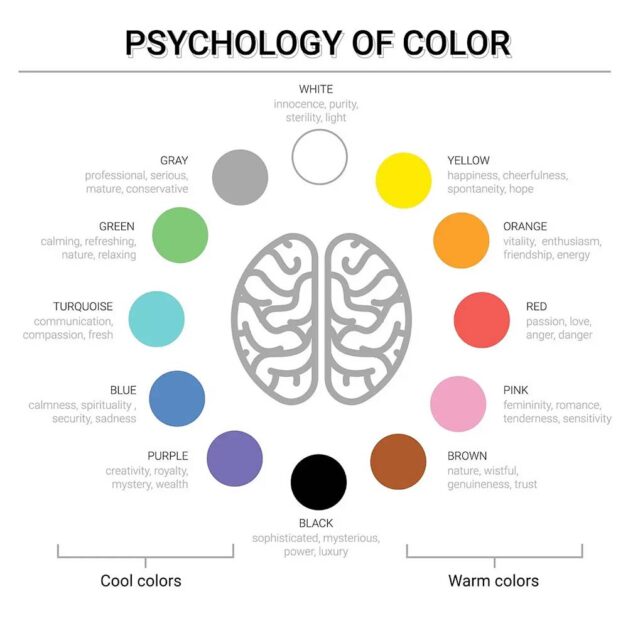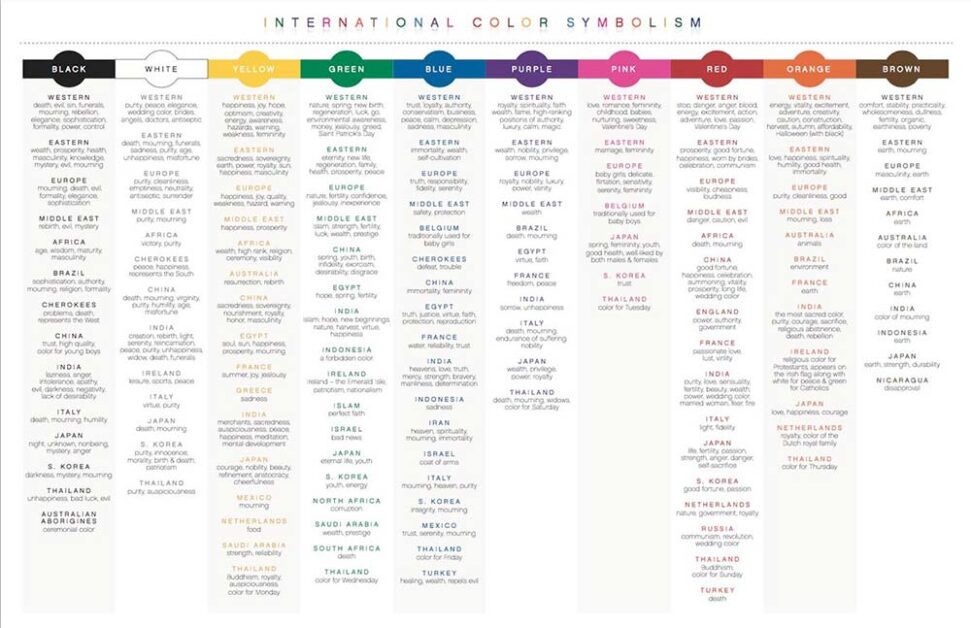Ever noticed how people treat you differently based on what you wear? Turns out colour might be the reason. Research suggests that wearing red can make someone appear up to 56% more attractive—but only in certain cultures. In others, red signals aggression. This brings us to an important question: is colour psychology in fashion trends, Is it a universal truth or just another marketing trick?

A study conducted in 2015 found that athletes wearing red were more likely to win—not because they were better, but because referees subconsciously favoured them. Now, apply that to everyday life. That ‘power colour’ blazer might not be boosting confidence; it could just be changing how others react to it. If colours can alter perception in sports, how much do they influence fashion trends and our daily interactions?
Also Read:
- Fashion Trends 2025: Global Inspiration for Your Must-Have Looks
- Look Rich Without Breaking the Bank: Affordable Old Money Style Finds!
Rethinking Colour Psychology in Fashion Trends: Is it Over-hyped?
Marketing sells the idea that colours shape moods and personalities. Red is for confidence, blue is calming, and yellow boosts creativity. But does this theory hold universally? Studies show that while red can increase perceived attractiveness in Western societies, it signifies danger or mourning in others. In China, for example, red represents luck and prosperity, while in South Africa, it is associated with mourning. These contrasting perceptions challenge the one-size-fits-all narrative of colour psychology in fashion.

Take hospitals that use blue for its ‘calming effect.’ It works—until it doesn’t. In cultures where blue is associated with mourning, the reaction isn’t relaxation; it’s discomfort. The same principle applies to clothing. A colour that evokes confidence for one person may carry a completely different emotional weight for another.
Additionally, brands manipulate fashion colour trends to create seasonal demands, often ignoring cultural context. Ever wondered why spring fashion colours change every year? It’s not about psychology; it’s about sales. Trend forecasting agencies push colour shifts to keep consumers buying. Pantone’s Colour of the Year isn’t chosen based on scientific evidence of emotional impact—it’s a business move designed to drive purchases.
Fashion Colour Trends Aren’t What You Think
Fashion colour trends are strategically controlled by industry leaders. Brands introduce new palettes each season, marketing them as ‘essential’ for staying fashionable. But are these colours really linked to psychology, or are they just a push to make you shop more?
- A report by McKinsey found that 78% of fashion purchases are influenced by external recommendations, whether from influencers, magazines, or brand advertising.
- Trend forecasting agencies dictate seasonal palettes, ensuring past wardrobes feel outdated.
- Colour psychology is often a tool for creating demand rather than an intrinsic emotional influencer.
As a result, even our ‘favourite colours’ in fashion may not be as personal as we think. This is why consumers should focus on personal preference rather than dictated trends. If you’re looking for a variety of fashion choices inspired by global trends, check out for a diverse selection.
The Influence of Culture on the Psychological Impact of Colours
Black means mourning in the West. In Japan, it symbolizes luxury. White represents purity in Western weddings but is linked to funerals in China. Purple is regal in some countries but is associated with mourning in Thailand. The takeaway? There is no universal rulebook for colour meanings.
Image:
What does this mean for fashion trends in 2025? As globalization increases, we may see a shift towards a more inclusive colour palette that acknowledges these cultural nuances rather than imposing Western-centric trends.
What Your Wardrobe Colours Say About You
Are introverts drawn to neutrals? Extroverts to bright hues? Not necessarily. Studies show that personal history influences colour choices more than personality types. Case in point:
- Steve Jobs—an introvert in black turtlenecks.
- Punk movements used loud colours for rebellion, not extroversion.
- Colour-blocking fashion originated as an artistic movement but is now often a marketing tool.
Brands use bold contrasts to signal ‘fearlessness,’ but do bright blocks of color actually make you bold? Or just more visible? The trend resurfaces every few years. It provies that colour palette choices are cyclical rather than psychological necessities.
Fashion Trends 2025: Are We Headed for a Colour Reset?
Soft neutrals are on the rise. Beige, sage, dusty rose—colours that mute digital noise. Is it a coincidence or a backlash to over stimulation? Studies suggest our brains crave visual calm in an era of screen fatigue. Muted tones like pastels and earth-inspired shades are becoming dominant in fashion trends in 2025, hinting at a collective desire for relaxation through colour.
- Earthy tones like terracotta, olive, and sand are gaining traction.
- Tech fatigue is influencing consumers to lean towards soothing colors.
- Fashion cycles indicate that neon and bold palettes might take a backseat.
Who decided autumn fashion colours mean brown, orange, and rust? Brands did. Seasonal palettes are a marketing construct, not a natural law. In some countries, autumn fashion leans towards pastels—proving that ‘fall colours’ are just a trend cycle, not a rule. Fashion trends in 2025 may see an even bigger deviation from these predictable palettes, embracing unexpected combinations inspired by global influences.
The Truth About Colour Psychology in Fashion (Personal Preference vs. Social Conditioning)
Are your colour choices truly yours? Studies show that upbringing, media, and cultural norms shape our ‘favourite colours’ more than we realize. Ever wonder why blue is the most popular colour in Western surveys? It’s everywhere—corporate logos, school uniforms, hospital walls. Exposure breeds familiarity, and familiarity breeds preference.
Colour psychology in fashion can influence perception, but it’s not a blueprint for personality. When does it help? How does it align with personal confidence. How good sales tactic it is? When it tells you to ‘dress for success’ with no consideration for context.
The real takeaway? Choose colours that resonate with you, not ones dictated by trends or stereotypes. Your wardrobe should reflect who you are—not who marketing tells you to be.
Also Read:
Final Thoughts: Colour as a Choice, Not a Rule
Fashion thrives on trends, but trends aren’t laws. Colour psychology in fashion has some merit, but it’s often overhyped to push sales. The next time you pick an outfit, forget what marketing says. Wear what feels right. Whether that’s a neon jacket or an all-black ensemble, the only opinion that truly matters is yours.
In 2025 and beyond, fashion will continue evolving, and so should your wardrobe—but on your terms.
Share your Review
Revise and Edit by Editorial Team
Connect with us on our Digital Endeavours-
Transforming Lives… Creating the magic. Just – Believe ~ Practice ~ Perform
BizTech Chronicle… Navigating Tomorrow’s Tech Frontiers 🚀
Youtube – Nuteq Entertainment Pvt Ltd
Trendvisionz – A Premier Digital Marketing Agency in India
Follow us on Twitter or LinkedIn. Check out our website.





